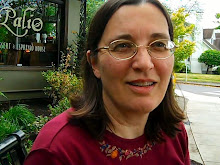The Substance of Style: How the Rise of Aesthetic Value Is Remaking Commerce, Culture, and Consciousness
Virginia Postrel's new book is part pop-culture, part economics and part a glance into the human psyche.
She lays out her groundwork really well, which is that people are interested in making themselves and their environments pleasing--"pleasing" being largely subjective, frequently unique and since the 1990s more and more eclectic. She does not sneer at Starbucks.
I was telling someone about her book this evening, and he replied that it was a restating of Maslow. Then I came to the passage in which she distinguishes her point from Maslow, or the oversimplification of his ideas that travel around.
Maslow's hierarchy of need is usually diagramed as a pyramid, with food, clothing, shelter on the bottom and "self-actualization," which would include aesthetics, at the top. Postrel talks about the hierarchy in terms of marginal utility, but her point is that this love of "beauty" (however it's defined) and the desire to have one's life, one's space, one's self beautiful (again) is more deeply ingrained in us than something we just hold off on until we've finished being fed, sheltered and protected from wild beasts.
On a social-historical level, it just makes sense. As she points out, it's poor people who produce the folk arts, from the bead work of the Native Americans of the upper plains to the sand paintings of the Navaho to the rugs of Central Asia (not her examples). They may wait until they've been delivered from this storm, until they've had today's meal, but they don't wait until they're set for life--or they would create no arts at all.
On a spiritual level, it also makes sense. If we are created in the image of God, then a love of beauty would be hard-wired into us, though not the fine points of its definition, as C.S. Lewis says in relation to other things in his description of the Tao.
Because of the rapid industrialization, especially in America, people found that their marginal utility lay in buying increasingly efficient and cheap goods, often at the expense of the beautiful. Since incomes are rising so much more rapidly than prices, however, the "extra" we can now buy we have begun to put into aesthetics. So in a way, Maslow's model holds true, but not in absolute layers; rather in day-by-day or even minute-by-minute decisions about what I can afford and what's important to have.

No comments:
Post a Comment